Enduring Grace: The Naples Connoisseur's Guide to Preserving Luxury Floral Arrangements
The expert guide to extending the life of your luxury florals in Naples' heat. Learn Emily's tips, Founder & Lead Designer at Grace & Blooms, for conditioning roses, orchids, and peonies to ensure enduring grace.
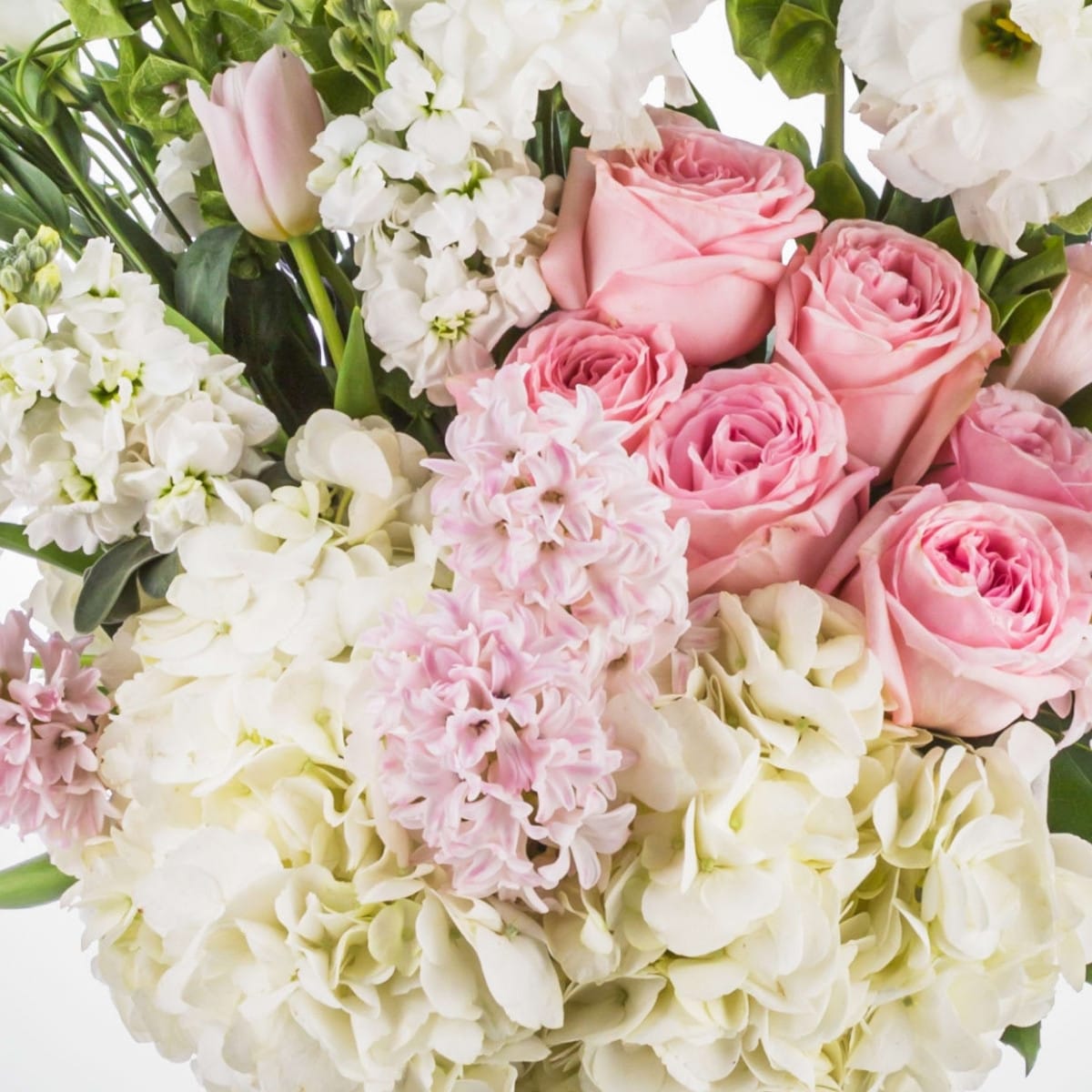
By Emily Limas, Founder & Lead Designer at Grace & Blooms
A Note from Emily
Picture your next event in Naples: the crystal glints, the conversation flows, and a magnificent floral centerpiece anchors the room, perfectly reflecting your impeccable taste and commitment to gracious hosting.
Or perhaps it’s the quiet joy of an anniversary surprise, illuminating a space simply by being there. At Grace & Blooms, we believe these moments of elevated beauty should endure.
Every arrangement we craft is a significant investment in elegance. We personally select the finest, most resilient stems from the velvety bloom of a rare garden rose to the graceful cascade of a Phalaenopsis orchid. And we use a rigorous, multi-step process to ensure they arrive pre-conditioned and ready to dazzle.
But Southwest Florida presents a unique challenge to even the highest-quality flowers. Naples' renowned blend of 90º days and often 90% humidity can prematurely test a delicate bloom.
Unlike generic advice found online, we understand that preserving luxury in this climate requires a specialized touch, an attentive eye to the microclimates of your home.
This guide is designed for the connoisseur, for you, who expects lasting perfection. Whether you're caring for fresh roses, delicate orchids, seasonal peonies, or our signature tropical arrangements, these proven techniques will help your luxury flowers thrive in Southwest Florida's challenging climate.
We are proud to stand beyond our promise with a Fresh Arrival Guarantee that covers your arrangement’s pristine condition upon delivery. This guide provides the expertise you need to extend that period of grace, ensuring the beauty we craft endures well past the first week.
Let’s keep that grace alive together with a few simple, thoughtful touches.
Every bloom tells a story.
TL;DR
We know your time is precious. For a thriving arrangement, simply remember these four essentials:
- Placement is Paramount: Locate your arrangement away from air conditioning vents, direct sun through glass, and fruit bowls. Use your home’s controlled interior climate to your advantage.
- Hydrate, Don’t Drench: Check the water level daily. For arrangements in floral foam, replenish with fresh, cool water until the foam is fully saturated. For vase arrangements, change the water entirely every two days.
- Recutting is Key: A subtle trim of to inch from each stem bottom is often the most impactful way to boost water uptake. Recutting should be done weekly, or immediately if water uptake slows. Use sharp, clean shears.
- Remove the Fading: Gently pluck any spent leaves or petals. Not only does this maintain a pristine look, but it prevents organic decay that can introduce bacteria to the fresh water.
For busy Naples residents: This guide provides expert techniques for extending the life of fresh flowers including roses, orchids, and peonies in Southwest Florida's heat and humidity.
The Grace & Blooms Difference: Why Our Arrangements Endure
Before an arrangement ever leaves our studio, it has already been through a meticulous, proprietary process. The core of the Grace & Blooms difference. We don't just order flowers; we source and condition them specifically for the Southwest Florida environment.
Our Pre-Conditioning Protocol
For a busy Naples hostess, our commitment is to minimize your maintenance time by maximizing the life of the flower before it even arrives at your door.
1. The Cold Chain Integrity: The moment stems arrive, their journey into our climate-controlled cooler is immediate. This unbroken cold chain is the most critical factor in guaranteeing longevity. We immediately re-cut all stems underwater and place them in specially formulated hydration solutions.
2. The Hydration Ritual: We use a proprietary blend of purified water and professional-grade floral food that contains both nutrients and a gentle bio-inhibitor to prevent bacterial growth. This initial "drink" is often the most important a flower will ever take.
3. SWFL Resilience Sourcing: We know what survives the Naples heat. We select cultivars known for their high petal count and robust stem structure. For instance, our white O’Hara roses are chosen not just for their scent and elegance but for their proven ability to last longer in high-humidity settings where softer petals are prone to browning.
When you purchase from our curated designs, you are receiving a bloom that is not simply beautiful, but one that has been purposefully pre-treated to thrive in your luxurious environment.
The Critical First 24 Hours: How to Care for Fresh Flowers in Naples
The first day your arrangement is home is the most crucial for setting the stage for its lasting beauty. Think of this process as settling a rare vintage wine, the immediate environment is everything.
Best placement for my arrangement in Naples' high humidity?
The most common longevity issue we see in Naples is thermal shock and accelerated dehydration. The best placement is always in cool, stable indoor shade and away from direct sun through glass and away from direct drafts.
This minimizes water loss caused by rapid evaporation, a key recommendation from experts at the University of Florida’s IFAS Extension on preserving cut flowers.
How Should I Manage My Arrangement Near Air Conditioning Vents?
The cool, dry air blasting from an air conditioning vent rapidly pulls moisture from the petals, leading to wilting, brown edges, and a shortened lifespan. Place the piece in the center of a room or on a side table where the temperature is stable. Avoid direct drafts at all costs.
Do I need to trim the stems right away after receiving my arrangement?
No. Because Grace & Blooms pre-conditions every stem underwater, an immediate recut is not strictly necessary. Your stems have already taken their most important drink. We recommend saving the trimming for your weekly water change to maximize the arrangement's integrity.
We adore seeing how our arrangements bring lasting beauty to your Naples home! Share your blooming moments on Instagram, tag @GraceAndBloomsNaples, and use #GraceAndBloomsNaples. Bonus: We might feature your post. Show us your SWFL floral style!
The Water Ritual
For arrangements in a vase, this step is non-negotiable:
- Prepare the Water: Use cool, fresh tap water. Do not use softened water, as the sodium content can be harmful to flowers.
- Add Flower Food: We include an ample supply of floral food with every order. This is not just sugar; it is a perfectly balanced solution of sugar (nutrition), a biocide (bacteria killer), and an acidifier (to help stems drink faster). Use it!
- The Quick Trim: When you do trim (initially, or weekly), use clean, sharp shears to snip to inch off the bottom of every stem, cutting at a slight angle. This opens up the cells, allowing them to drink easily. Do this under running water if possible to prevent air bubbles from blocking water uptake.
Is Naples' Soft Water Safe for My Flowers?
The water in many Naples homes is softened, but the high sodium content from the softening process can actually be toxic to cut flowers, hindering water uptake and accelerating decay.
We recommend using purified or bottled water if your household water is heavily softened. If using tap water, ensure it is fresh and cool.
Preserving Your Investment: Flower-Specific Care
While the basic care rituals apply to all fresh flowers, luxury flowers have specific needs that, when met, elevate their performance. When you invest in a $200+ statement piece for your dining room, you deserve personalized advice.
Why Do My Blooms Arrive So Tight?
If your roses, peonies, or lilies arrive tightly closed, it is a deliberate choice made by our design team.
Sending blooms in the bud stage ensures they are protected during the journey in the SWFL heat and guarantees you enjoy the maximum amount of "bloom time" and watching them elegantly unfurl over several days in your home. This is a hallmark of quality sourcing.
The Peerless Rose
Roses are the language of luxury, and they are especially beloved in Naples. However, they are heavy drinkers and susceptible to heat.
The Water Line Check: Roses should always have full access to water. In humid environments, they evaporate water quickly. Check the water line twice a day.
What is the longest-lasting rose type for the SWFL climate?
For maximum longevity and petal structure integrity in heat and humidity, Garden Roses (such as O’Hara, David Austin, or hybrid tea varieties with high petal counts) are the superior choice. Their dense structure handles the moisture fluctuations of an indoor environment better than standard florists' roses.
Is It Safe to Place My Luxury Arrangement Near My Pets?
This is a critically important question for many Naples residents. While we often use pet-safe fillers, many luxury varieties (like Lilies, Tulips, and even certain types of Hydrangea) can be toxic if ingested.
Always mention that you have pets when ordering. Our designers can ensure the composition is entirely safe, prioritizing flowers like Roses and Sunflowers.
The Seasonal Orchid
Phalaenopsis orchids are a staple in SWFL homes for their resilience and architectural beauty. Our cut orchid arrangements, however, are slightly different.
Mist Sparingly: In high humidity, avoid misting the petals. Excess moisture can encourage fungal spots.
For all cut flowers, keeping the water clean is essential. Research published in PLOS ONE by scientists at Cornell University confirms that bacterial growth in vase water is a major contributor to premature flower death.
How often should I water or mist my orchids in high humidity?
For potted orchids, water only when the potting medium is dry to the touch, and never let them sit in standing water.
For cut sprays of orchids, misting should be done no more than every 10 days, or simply avoided entirely, given the natural humidity of Naples.
How manageable are Peonies in the Florida heat?
With Grace & Blooms’ professional pre-conditioning and proper indoor placement (coolest spot in the room), peonies are manageable and can offer 5–7 beautiful days of enjoyment. However, they are naturally short-lived in the heat compared to roses or tropicals.
Reviving an Elegant Slumber: Advanced Techniques
Even the most meticulous care regimen can’t stop time. But when a stem begins to look tired, there are professional techniques you can employ to give your blooms a spectacular second, or even third, life.
What should I do if my luxury arrangement starts drooping?
If you notice wilting or drooping, your first check should be the water level and the ambient heat. A drooping head means the stem is clogged or dehydrated. Remove the affected stem, give it a fresh, sharp cut, and immediately place it in a glass of cool water for an hour to see if it revives.
What is the best technique to revive wilting roses?
If a rose head begins to hang, don’t despair. This is a sign the stem is blocked.
Immediately re-cut the stem aggressively (about 1 inch) underwater, then submerge the entire rose, head and stem, in a bath of cool water for 30 minutes. This shock treatment forces water uptake and will often perk the bloom right up.
The Emergency Ice Bath (Shock Treatment)
This method is highly effective for any stem showing signs of severe dehydration, especially after a party or accidental exposure to a warm spot.
- Prep the Spa: Fill a clean bucket or utility sink with cool water and a few handfuls of ice.
- Strip and Snip: Carefully remove the entire arrangement from the vase. Strip away any leaves or greenery that would fall below the water line.
- The Deep Plunge: Submerge the stems completely into the ice water. For extremely dehydrated flowers (like droopy hydrangeas or roses), you can submerge the entire flower head as well.
- The Hour of Rest: Allow the flowers to soak in this cool, rehydrating bath for one to two hours. The cold temperature slows down respiration, and the full submersion allows the entire stem to pull in water without resistance.
- Re-Vase: While the flowers are soaking, completely clean and refill your vase with fresh, cool water and a new packet of floral food. Re-cut the stems one last time and place the revived arrangement back in its ideal, cool microclimate.
Is It Safe to Use Household Bleach in My Vase Water?
Yes, sparingly. When you run out of the provided floral food, a quarter teaspoon of household bleach per quart of water acts as a biocide, helping to inhibit the bacterial growth that clogs stems.
However, professional floral food is a superior, balanced solution that we always recommend first. For a quick sugar boost, you can also mix one quart of cool water with two tablespoons of white vinegar (the acidifier) and two tablespoons of sugar (the food).
Can I use lemon-lime soda or Sprite to keep my flowers fresh?
Always prioritize the professional-grade floral food packets provided. We strongly advise against using sodas (like Sprite); the high, unbalanced sugar/acid concentration can promote bacterial growth and damage delicate petals.
If you must use a home remedy, use the correct, balanced proportions: 1 quart of cool water mixed with two tablespoons of white vinegar (acidifier) and two tablespoons of sugar (food). A safer biocide substitute is a quarter teaspoon of household bleach per quart of water, which inhibits bacterial growth.
Pruning for Aesthetics and Health
As petals brown or leaves yellow, they not only detract from the overall aesthetic but can actively harm the other flowers.
- Deadheading: Gently pinch or cut off spent or browning blooms. This directs the plant’s energy toward maintaining the remaining healthy flowers.
- Removing Foliage: Always remove foliage (leaves) that falls below the water line. This organic matter decays quickly, creating a bacterial soup that the healthy stems then drink.
This decay promotes bacterial growth, which shortens the vase life of flowers and fouls the water. An effect well-documented by floral experts like Rose Edinger of the Brooklyn Botanic Garden and researchers at Oregon State University Extension.
From Our Studio to Your Home: Grace That Endures
Thank you for choosing Grace & Blooms for your luxury flower care needs in Naples. You are not just purchasing a floral arrangement; you are investing in an expression of enduring beauty designed to thrive in Southwest Florida's challenging climate. A commitment to quality that is as steadfast as your own impeccable standards.
This guide empowers you to become a true connoisseur of your luxury blooms. By mastering the microclimate of your home and applying these simple, specific techniques designed to counteract the unique challenges of Southwest Florida’s heat and humidity you are actively participating in the artistry. You are ensuring the visual poetry of your arrangement continues to unfold, day after day.
Whether you are seeking the simple elegance of our $89 everyday designs, or commissioning a bespoke, multi-room installation that averages toward the $305+ price point, we are here to provide the foundation of grace, quality, and expertise.
We are so excited for your next luxury moment! We invite you to explore our curated designs, where every stem has been selected, conditioned, and designed to bring lasting beauty to your home or event.
Ready for your next luxury moment?
Now that you understand lasting grace, allow us to craft the next investment that defines your luxurious space. Discover the perfect, enduring design for your home's next beautiful chapter.
About the Author
Emily, the founder of Grace & Blooms, pours her Naples-rooted passion into every arrangement. Her expertise ensures each stem is not only beautiful but also pre-conditioned to thrive in our unique climate. She believes that true luxury lies in longevity. Crafted with grace, delivered with care.
The Designer’s Journal
We’ve collected some of the most frequent and insightful questions from our clientele to provide an authoritative perspective on your luxury floral care.
Longevity, Travel & Environment
How long should I expect the flowers to last?
Under ideal conditions, and when following these care instructions, our pre-conditioned arrangements are designed to last well beyond the standard 5-7 days. Roses and tropicals often last 7–12 days, while durable stems (like Chrysanthemums) can last 10–14 days.
Should I refrigerate flowers overnight?
No. Your home refrigerator is often too cold and contains ripening fruit (ethylene gas). The temperature shock from room to fridge and back out will do more harm than good to a luxury arrangement.
What is the best temperature for flowers in the house?
The ideal temperature is stable and cool, between 65ºF and 72ºF. Avoid large temperature swings, as these cause the flowers to "respire" rapidly, consuming their energy and shortening their life.
I'm leaving town for the weekend. How do I keep them fresh?
Before leaving, give all stems a fresh, sharp cut. Place the arrangement in a large vessel with deep, fresh water and place it in the coolest, darkest spot in your home. Perhaps a powder room or laundry room closet away from all vents and windows.
Daily Maintenance & Water Secrets
Can I use household bleach in the water?
Yes, sparingly. A quarter teaspoon of bleach per quart of water acts as a biocide, helping to inhibit bacterial growth. However, professional floral food is a superior, balanced solution that we always recommend first.
My flowers are arranged in foam. What do I do?
Arrangements in floral foam require daily attention. Do not remove the flowers. Simply add fresh, cool water to the container until the foam is completely saturated. Lift the arrangement gently to ensure the base is heavy with water.
What’s the best way to clean the vase without damaging the stems?
Between uses, clean your vase with hot, soapy water and a bottle brush, followed by a rinse with a capful of bleach to sanitize the glass. Ensure all bleach residue is rinsed away before adding new flowers.
Can I separate the arrangement into smaller pieces?
Absolutely. A beautiful way to extend the moment is to disassemble the centerpiece as some blooms fade, taking the still-perfect stems and re-vasing them into smaller, charming satellite arrangements for a bedside table or powder room.
How do I make cut flowers last longer in Florida humidity?
In Florida's humid climate, focus on three essentials: keep arrangements in cool, stable indoor temperatures away from direct sun and AC vents; change water completely every 2 days for vase arrangements; and remove any foliage below the waterline to prevent bacterial growth.
Our pre-conditioned arrangements from Grace & Blooms are specifically selected for Southwest Florida's climate, giving you a head start on longevity.
Bloom Specifics & Design Intent
Are my arrangements pet-friendly?
This is a critically important question. While we often use pet-safe fillers, many luxury varieties (Lillies, Tulips) can be toxic. Always mention that you have pets when ordering, and our designers will ensure the composition is entirely pet-safe.
Why do some flowers arrive closed?
We often send high-end blooms like lilies, roses, and peonies in bud stage. This is intentional. It protects the delicate petals during delivery and ensures you enjoy the satisfying, graceful experience of watching them unfurl perfectly over the next several days.
Why is my orchid dropping buds?
This is usually caused by thermal shock or sudden environmental change, often a cold draft from an A/C vent, or a sudden change in light. Ensure the temperature and placement are stable. Overwatering can also be a factor.
How often should I mist my tropical arrangements in Naples?
Mist sparingly, if at all. Naples already has high natural humidity, and misting can sometimes encourage fungal spots on delicate petals, especially in low-air-movement areas. Focus instead on keeping the stems hydrated.
Are there any local SWFL flowers you use seasonally?
Absolutely. We prioritize locally sourced, durable tropicals like Anthuriums, Ginger, and specific Bromeliads in our custom designs, particularly in the warmer months. These flowers are naturally acclimated to the high heat and humidity.
Still have questions?
We’ve gathered everything you need to know, from delivery details to design tips, in our full FAQ Guide.
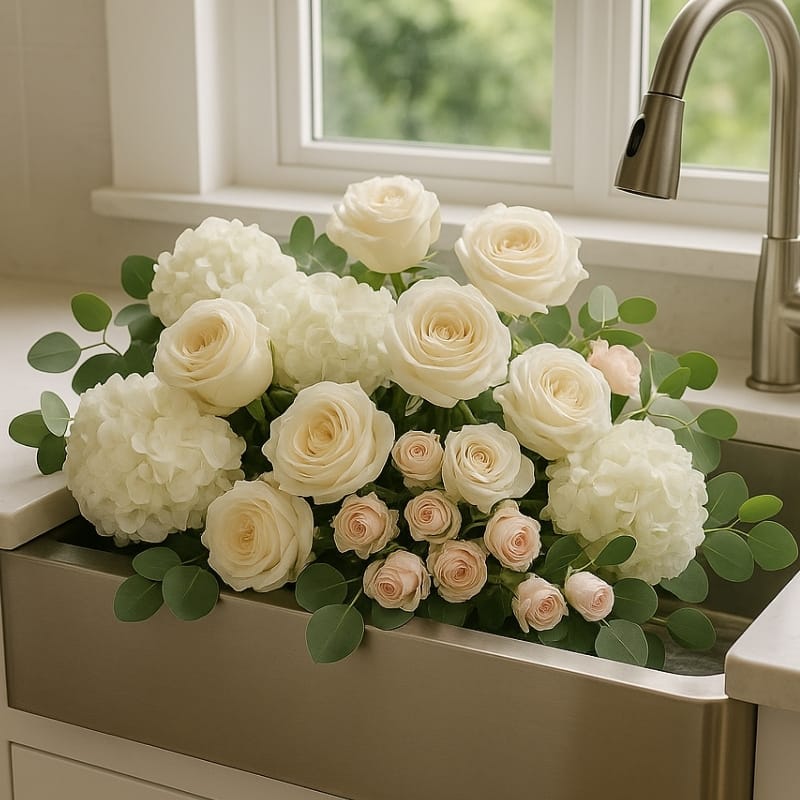
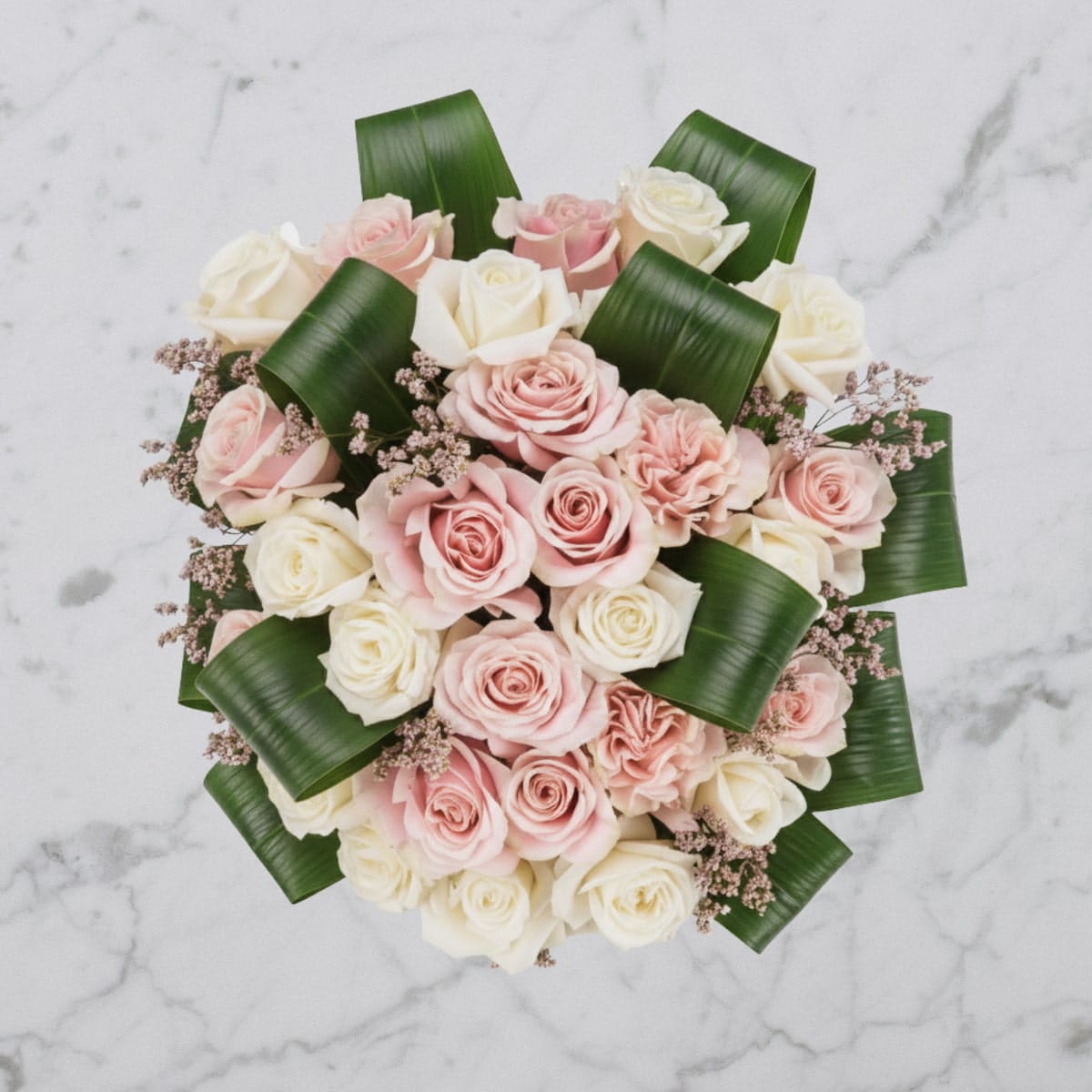
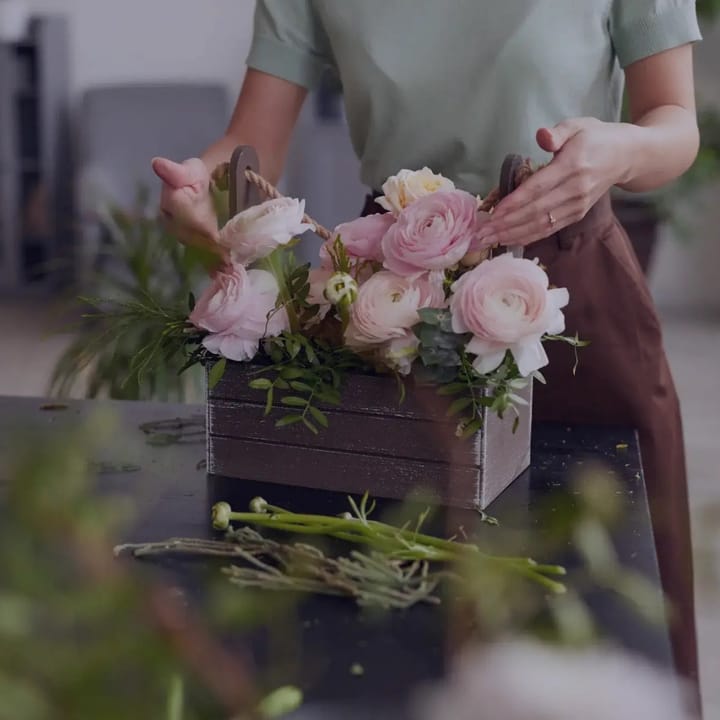

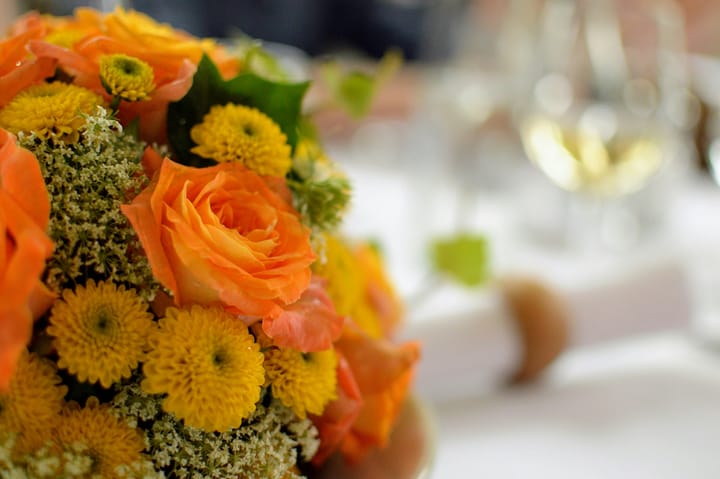
Comments ()